Iran Bakhtiari Nomads
From ancient times, the human being has always sought different ways to adapt himself to natural and climatic situations and geographical limitations. Iran, as one of the vast oldest cradles of civilization, embraces a wide range of climatic conditions settled by various ethnic groups. The diversity is so amazing that it is no wonder if you can still witness one of the oldest kinds of lifestyle, the nomadic life. Living and migrating in the two main Iran mountain ranges, Alborz and Zagros (the longest), has taught the nomadic tribes how to adjust themselves to the harsh mountainous conditions and consume sustainably the environmental resources. Among different Iran nomadic tribes, Bakhtiari nomads form the largest surviving nomadic tribe in the Zagros Mountains. Lush forests, rough rivers, fertile pastures as well as harsh climatic conditions through different times of the year have pushed Bakhtiari nomads to practice a nomadic lifestyle that is proper to this geographical area.
Here, you will find all the information you need to know if you are planning to travel to Iran for an authentic experience of living among the Bakhtiari nomadic tribe.
Short History of Iran Bakhtiari Nomads
Among numerous groups of ethnicities and nomadic tribes in vast Iran, Bakhtiari (also Bakhtiyari) Lur tribe is the largest group that still migrates seasonally to overcome the harsh conditions in the Zagros ranges.
There are different theories about who Bakhtiaris are. According to Zoroastrian mythology and Shahnameh (the epic poem of the kings and heroic tales of ancient Persia), the Lurs (meaning nomadic) are the descendants of the people who could escape from the demon Zahhak. They took refuge in Zardkuh and Kuhrang and named themselves Bakhtiar (meaning fortunate bearer) because they could survive.
Today, many historians arguably agree Bakhtiari people are originally Lurs. Others propose they were originally from Fars and settled in Khuzestan and Esfahan after the legendary king Kay Khosrow conquered Media.
Meanwhile, some researchers suggest Bakhtiyaris are the progeny of the Uxian tribe of the Persian Empire who fought against Alexander the Great at the battle of the Uxian Defile somewhere between the Persian cities of Susa and Persepolis in 330 B.C. The Uxian tribe were non-Iranian semi-nomads who lived in the Zagros Mountains.
Bakhtiaris themselves believe their name has been derived from the word “Bakhtiyarwand”, an eminent figure of Greater Lur. Around 913, Lorestan was divided into the two realms of Greater Lur (Lur-i Buzurg) and Little Lur (Lur-i Kuchak). The Greater Lur extended from Isfahan to Kohgiluyeh and from Shushtar to Behbahan. In the Safavid era, both territories were known as Bakhtiari land. In the 16th century, the Bakhtiaris were divided into two groups Haft Lang (Seven Shares) and Chahar Lang (Four Shares) by Jahangir Khan Bakhtiyari. Later, the northern part of the Greater Lur became known as Bakhtiari.
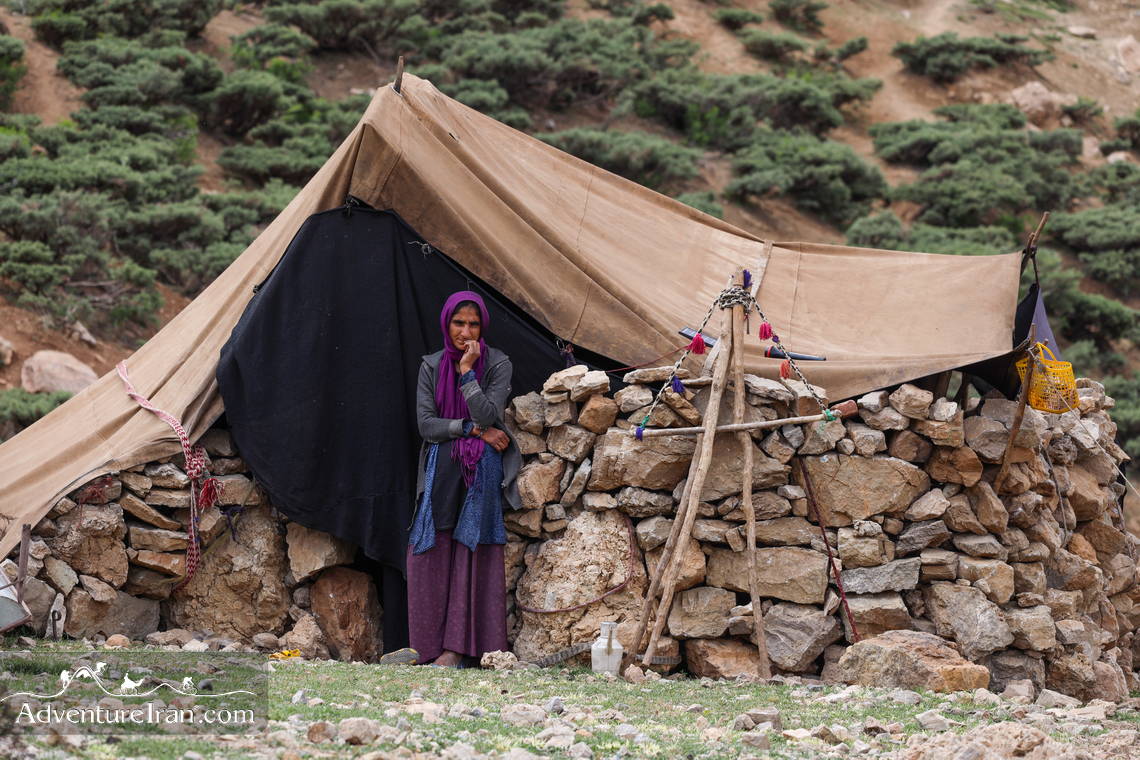
Kooch / Kuch and Seasonal Migration
Although a small group of Bakhtiari is still nomadic pastoral dwellers, migrating between the summer pastures of the mountains (sardsir or yaylaq) in the spring and winter pastures of the plains (garmsir or qishlaq), they still form the largest group of migrating nomads in Iran. Bakhtiari nomads migrate twice a year, in the spring and the fall, and they live in temporary accommodations such as tents. The seasonal migrations can reach 300 km. They start Kuch from Ramhormoz (in Khuzestan province) on March 13th to Sabzkuh (in Chahar Mahal and Bakhtiari province) until May 4th. On the way, they pass through the cities of Haftgol, Baghmalek, Qaleh Tel, Barangard, Izeh, and Dehdez in Khuzestan province, and Lordegan in Chahar Mahal and Bakhtiari province. It takes 15 to 45 days to migrate into the mountains and 8 to 30 days back to the plain. Nomadic Bakhtiaris mainly raise goats, sheep, and cattle and usually provide their agricultural products through trading with nearby villages.

Due to the limited number of crossable forges along the Zagros ranges, the migration routes rarely change. The Bakhtiari nomads usually cross the five main roads of Taraz, Hezar Cham, Kuh Sefid, Do Ab, and Dezpart. Passing through these arduous routes, the nomads suffer difficulties, accidents, and livestock losses. Yet, seasonal migration is essential due to the excessive cold in sardsir from October to April and heat in garmsir from May to September. Despite all these hardships, migration has remained the best way of raising livestock in this region.
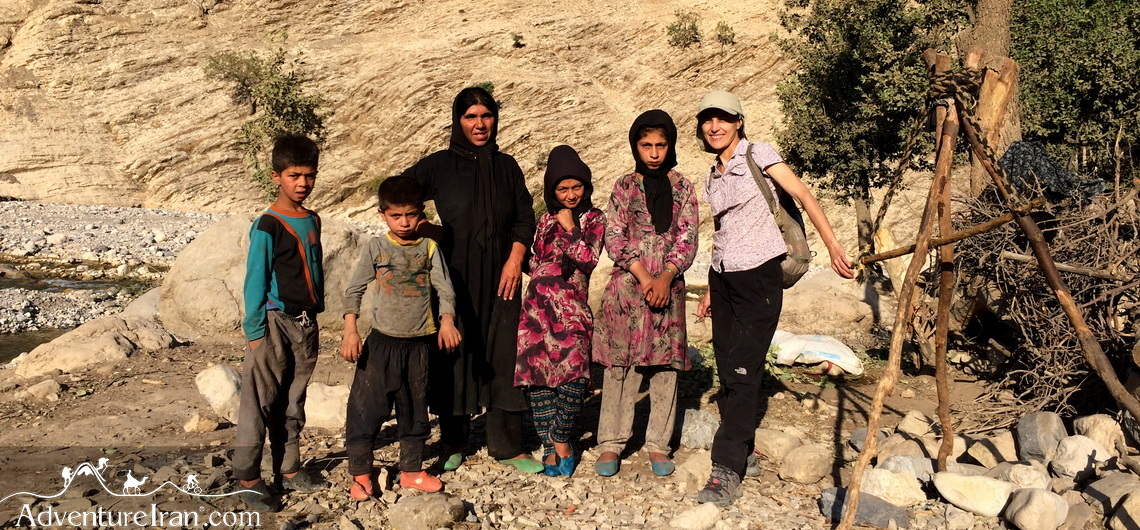
Bakhtiari Nomadic People
Nomadic Bakhtiaris speak the Bakhtiari dialect of the Luri or Lori language. Lori and Bakhtiari are much close to Persian than Kurdish (spoken in the northern Zagros). Different dialects and sub-dialects of the Bakhtiari together with Lori form the Perside southern Zagros group. Numerical estimates of the Bakhtiari nomads’ population vary widely from around 800,000 to over one million people. Bakhtiari people live in an area of roughly 75,000 km2 stretching from the Dez river, Shushtar, and Ramhormoz on the west to Daran and Shahr-e Kord on the east.
Social organization in the Bakhtiari tribe is segmented into different units. Each tent belongs to a nuclear family (Khanevadeh). Each camp consists of three to twelve tents (the extended family or owlad). During the time of kooch or migration, the relative camps move together and make different groups (one hundred people in each group called tireh). Each group itself is part of a bigger clan (tayefeh). The number of people in the largest clans reaches 25,000 persons. Each clan itself belongs to a section, and finally, the sections are part of the two main groups of Haft Lang and Chahar Lang which shape the Bakhtiari tribe. The main chief of the tribe as a whole is selected from one of these two main groups in succession to keep the unity and strength between the two groups.
The relations among the members of the joint families (that includes the members of a tent or khanevadeh to tireh) are determined by three factors: patrilineal descent, marriage between patrilineal cousins, and virilocality. The joint families are united in all aspects of nomadic life, from daily tasks to fighting against enemies. Various tirehs camp in different places to avoid overcrowding and overgrazing, and this is vital for the survival of the nomadic community.
Bakhtiaris have played significant roles in Iran’s different historical events. Among famous faces, we can name Soraya Esfandiary-Bakhtiyari (1932-2001), the queen consort of Iran as the second wife of Mohammad Reza Shah Pahlavi; Sardar Asaad Bakhtiari (1856-1917), a chieftain of the Haft Lang tribe and one of the primary figures of the Persian Constitutional Revolution (1905-1911); and Shapour Bakhtiar (1914-1991), the last Prime Minister of Iran before Islamic revolution (1979).
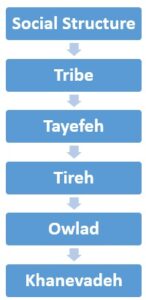
Traditional Clothes and Handicrafts
Due to the nomadic life, Bakhtiari nomads are self-sufficient and produce what they need from raw materials found in their place of residence. Bakhtiaris’ prominent handicraft is wool-woven goods produced only by women. The wool comes from their livestock. Bakhtiyari women weave a variety of goods such as flat-woven sacks, saddlebags (khorjin), kilim (or gelim- a particular type of flat-woven rug), ropes, and clothes.
One of the most famous Bakhtiari nomadic handicrafts is their carpets. They are symmetrically knotted carpets woven with wool on horizontal looms. (These carpets are different from the carpets woven by the sedentary women in Chahar Mahal.) The designs and patterns of the nomadic Bakhtiari carpets are based on regional and natural elements, such as animals, plants, birds, flowers and trees, and swastikas.
Bakhtiari men’s typical outfit includes a white waterproof woolen tonic (named chuqa) with vertical indigo strips, wide black pants (debit), giveh (a kind of handmade shoes with cotton fibers for uppers and leather sole), a white shawl wrapped around the waist like a belt, and a tall skull-cap. The nomads used to make use of natural substances for dyeing yarns such as indigo and madder, but today they use artificial dyes as well. Bakhtiari shepherds wear another warm felted overcoat. It is simultaneously waterproof and nonflammable (called kordin).
Bakhtiari women wear beautiful colorful traditional clothes. Young ladies wear clothes in lighter colors, while middle-aged women wear darker clothes. The upper body- decorated with three buttons on the front- and the skirt- reaching under the knees with a 20 cm slit on both sides- of their sleeved dresses are flat with no ruffle. They wear a folded skirt under the dress. A strap hanging from the back of the head to the waist is a string to which different kinds of beads and ornaments are attached.
They cover their heads with a scarf looking like a hat ornamented with coins, sequins, or silvery materials (called lachak), and another long scarf made of thin silk-like fabric (named mina). They also tie a black rectangular silky handkerchief, like a headband, at the back of the head.
In the past, Bakhtiari nomadic women used to wear Giveh, but today many of them wear black leather shoes.
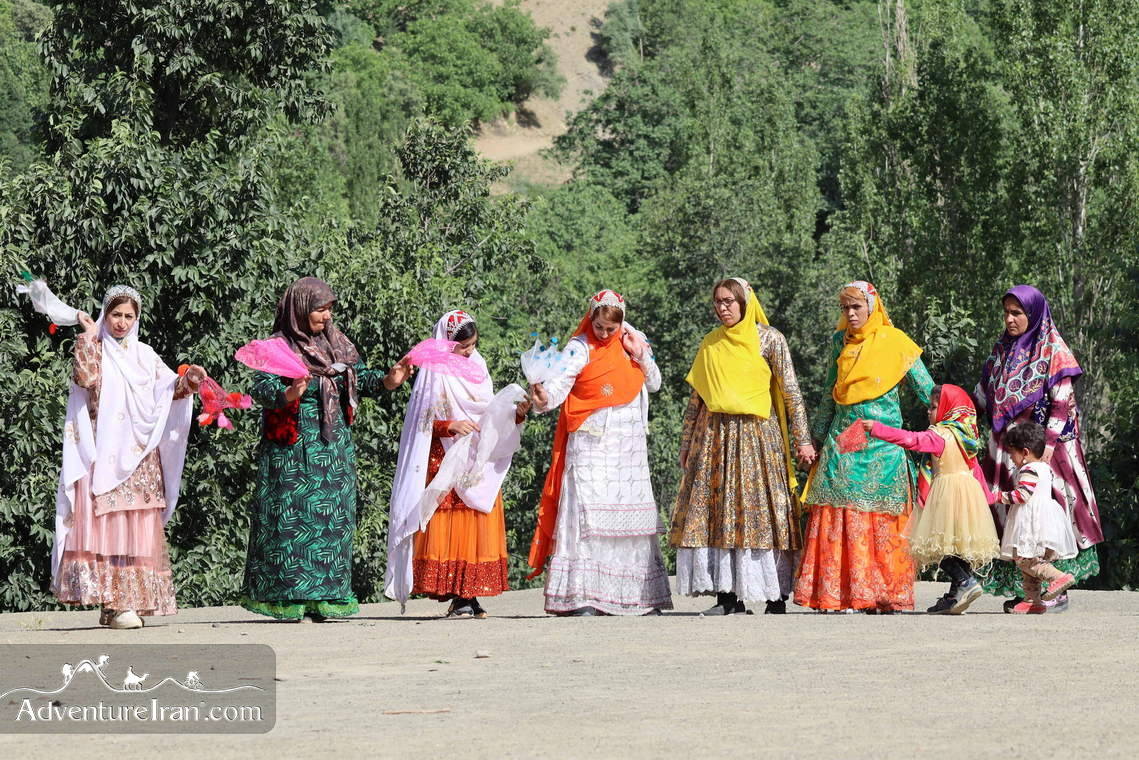
Foods and Drinks
Bakhtiari nomadic diet includes simple light foods, yet nutritious. Although the Bakhtiari nomads are stock raisers and are expected to have a diet based on meat, the shepherds usually do not kill their livestock, since the animals are their main source of income. They usually consume dairy products and other products such as wool made from animals. Yet, Bakhtiari kebab is one of the best-known Persian kebabs.
Bakhtiyari nomads’ cuisine includes a variety of dairy products such as yogurt, butter, cheese, doogh (a drink of yogurt and water), and curd, as well as wild herbs. They also bake different kinds of bread of wheat, barley, and oak.
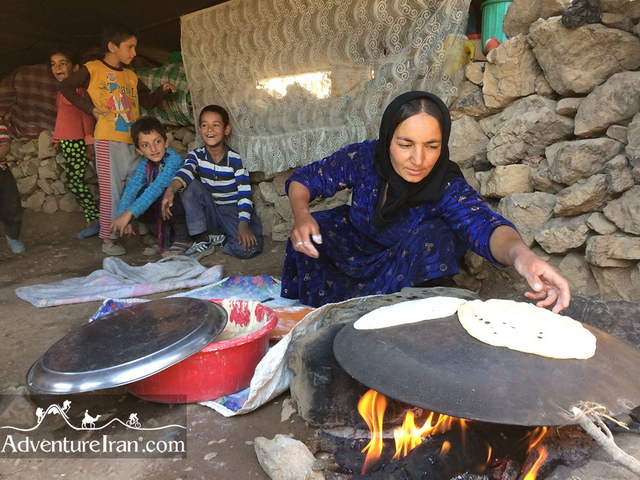
Traditional Tent
Most Bakhtiari nomads live in a kind of tent named “Bohon”. The traditional black tent (or Siah Chador in Persian) is woven by women with goat hair. They use goat hair because it is cheap and available. It is also waterproof and does not allow water to penetrate the tent when it is raining. Moreover, it is lighter than fleece or ewe hair. It is a key factor for the nomads because they have to live a simple and portable life due to the nomadic kooch or seasonal migration.
Bakhtiari nomads set their tents up differently in the summer and winter. In the cold weather, the nomads make the roof of the tent in a conical shape, so that the rain will fall to the ground. They also cover the area around the tent with soil and create some small canals in the soil so that the rainwater will flow and not penetrate the tent. In the summer, they keep the roof of the tent flat like a shade.
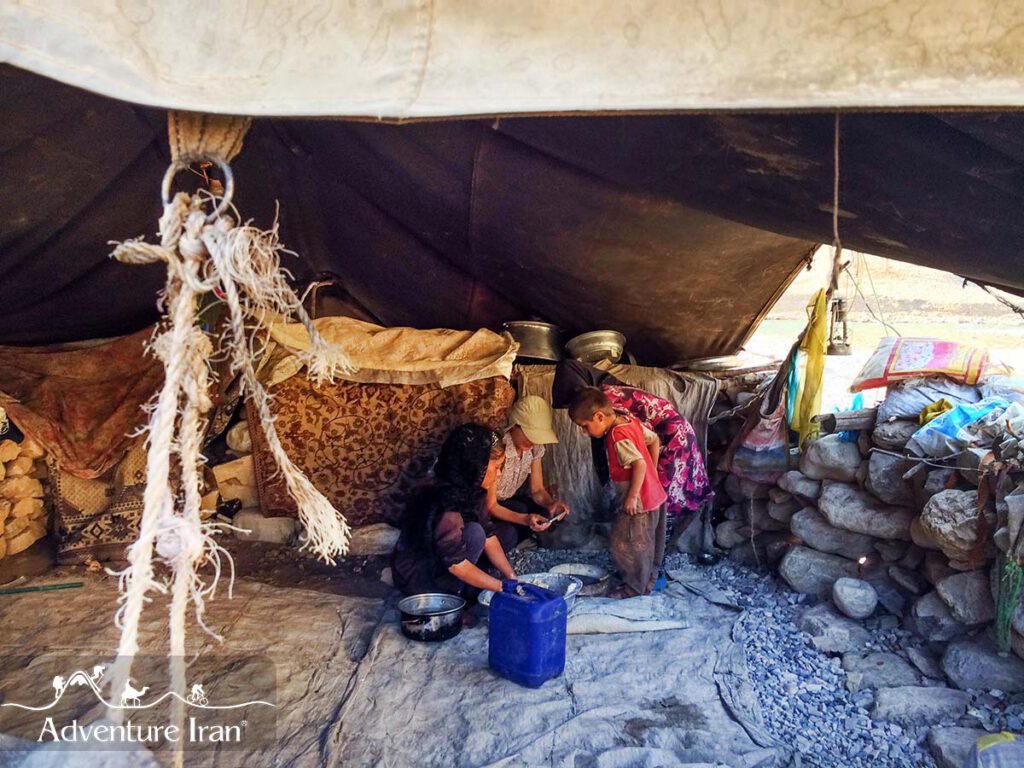
Bakhtiari Nomadic Lifestyle
Bakhtiari nomads are mainly sheep and goat breeders or graziers. They provide their food and needs such as raw materials for their handicrafts by selling the animals. They also raise mules for carrying the loads and riding. Today, many Bakhtiyaris also cultivate wheat and barley for baking bread and for feeding livestock. Both their economic and farming system is dependent on migration. The lambs are born in the Qishlaq (in the winter) and sold in the coming fall. The grains are sown in the Yeylaq (at the end of the summer) before their kooch, and threshed (at the beginning of the following summer) after their return. The nomads also sow the grains which reap in only five months in the qishlaq (at the beginning of the fall) and harvest at the end of their stay, before their kuch. Other activities, such as hunting or wild plant gathering have also been adjusted to the migration cycle and the environmental conditions in the Central Zagros.
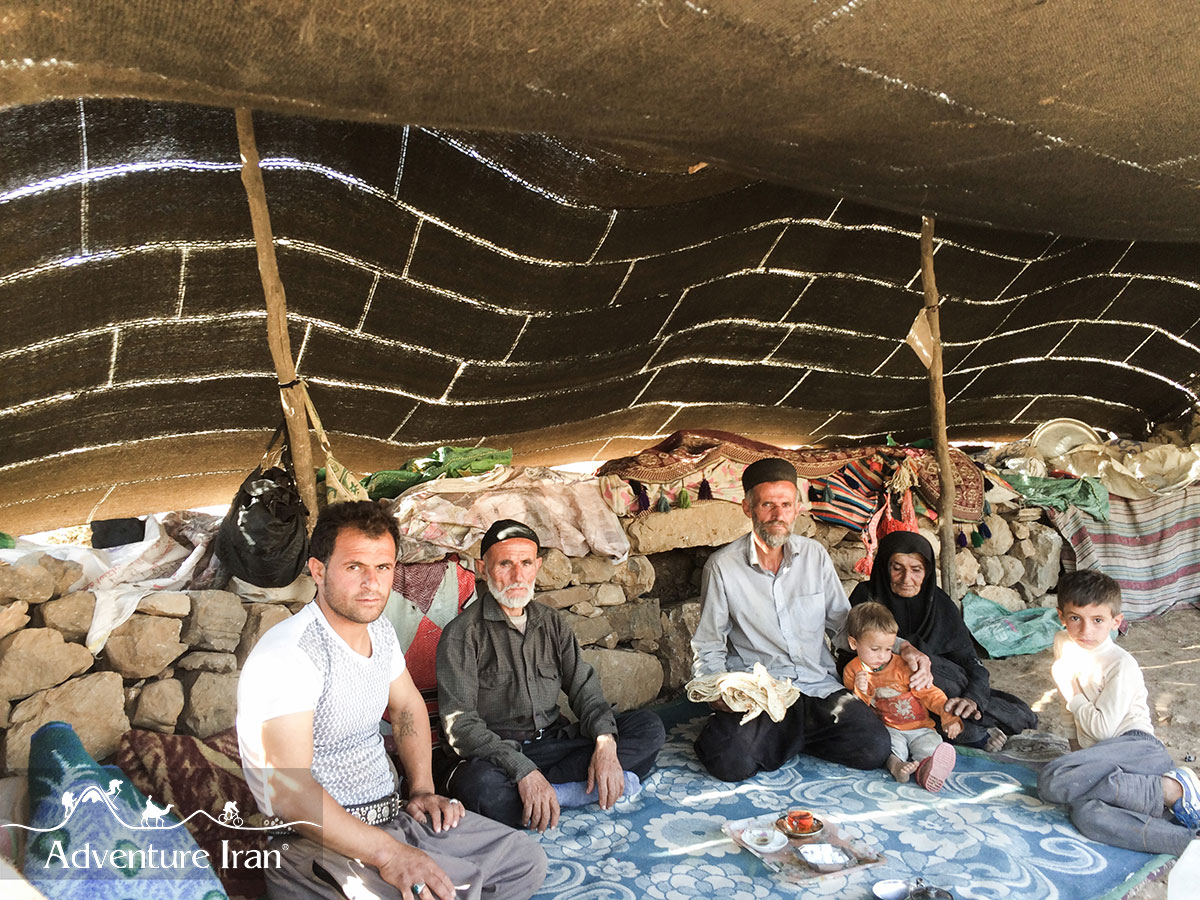
The Region and Map
Chaharmahal and Bakhtiari is a small province, restricted to Esfahan from the north and east to Kohgiluyeh and Boyer Ahmad from the south, Khuzestan from the west, and Lorestan from the northwest. This small province consists of two main parts of Chahar Mahal and Bakhtiari. Over one-third of its population are from the Bakhtiari tribe. Bakhtiaris mostly inhabit Chaharmahal and Bakhtiari province (mainly in Shahr-e Kord) as well as Bushehr, eastern Khuzestan (chiefly in the cities of Andika, Izeh, and Masjed Soleyman), Lorestan, and Isfahan provinces.

The Bakhtiari nomads’ residence is confined from the city of Fereydan (in Isfahan province) to Dorud (in Luristan province) in the summer, and from Dezful to Izeh and Ramhormoz (all in Khuzestan province) in the winter.
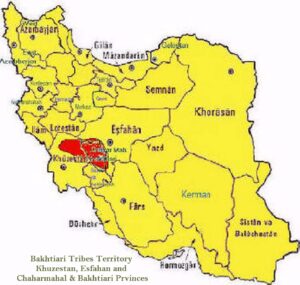
Best Time to Visit Bakhtiari Nomadic Tribe
Bakhtiari nomads migrate from lower altitudes to the highlands in mid-spring. They stay there until the end of summer and return to the lower lands in the cold season. When it is pleasant in the summer, from the first of June to September is the best time to visit the Bakhtiari nomadic tribe in Lorestan province, hike through their encampment, learn about their lifestyle, and take photos of the scenic landscapes of the region ornamented with dispersing nomadic traditional tents as well as the nomads themselves in traditional costumes. If you wish to travel to Iran in the winter, around February to the middle of March is the best time to visit the Bakhtiari nomads in Khuzestan province.

Although a small group of Bakhtiaris is still performing nomadic lifestyle, migrating between the summer pastures of the mountains (sardsir or) in the spring and winter pastures of the plains (garmsir or Qishlaq), they still form the largest group of migrating nomads in Iran. Bakhtiari nomads migrate twice a year, in the spring and the fall, and they live in temporary accommodations such as tents. The seasonal migrations can reach 300 km.
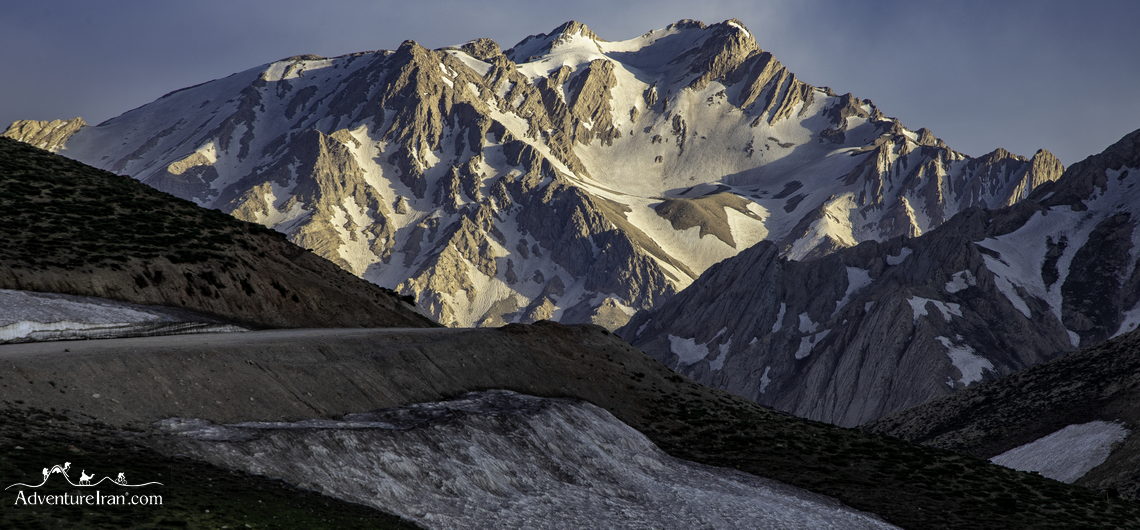
Photography of Bakhtiari Tribes
Photography in Iran is one of the special interests of adventurous photographers who travel to Iran and Photography of Bakhtiari tribes is at the top of them. If you are a photographer or you are interested in a photography journey to this wonderland region of Iran, the most unique experience you could have is doing KOOCH with the nomads which starts in early spring. They leave the southern part of Khuzestan province and move towards the upper altitude of Charmahal and Bakhtiari province. Bakhtiari Nomad Photography Tour is an Adventure Iran tailor-made tour design for everyone interested in photo tours in Iran.
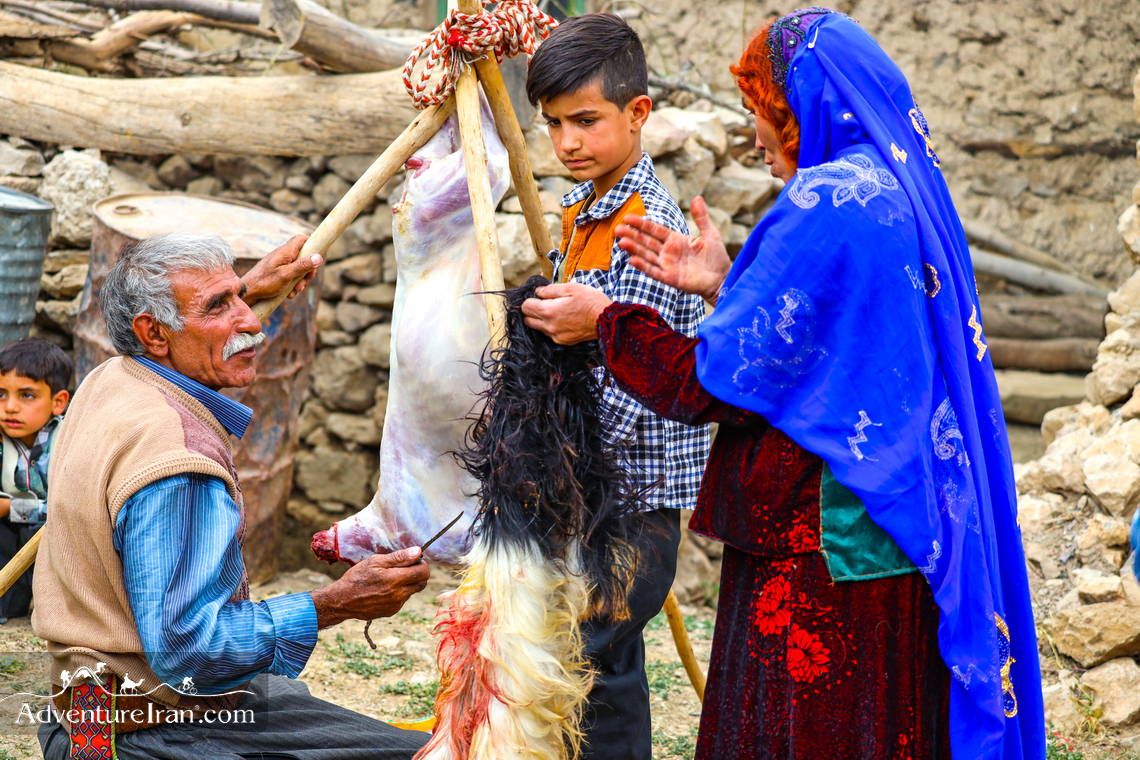
The Films about Bakhtiari Nomads
If you would like to know better about the Bakhtiari nomads of Iran, there are some movies that are worth watching.
One of the most prominent movies about the Iranian nomadic Bakhtiaris is the documentary Grass: A Nation’s Battle for Life (1925) produced by Merian C. Cooper. This movie narrates how the Bakhtiari tribe migrates from Khuzestan to Chahar Mahaal and crosses the Karun river with 50,000 people and 125,000 animals. The Grass documentary movie about the Bakhtiari tribe is one of the world’s oldest documentary movies.
There is also another documentary named People of the Wind (1975) narrating the same story a half-century later. This American documentary, produced by Anthony Howarth and David Koff, was nominated for an Academy Award for Best Documentary Feature and also for a Golden Globe. The DVD of this documentary is available on Amazon as well.
Furthermore, in the second episode of The Ascent of Man (1973), Jacob Bronowski, the British mathematician and historian of science and also the writer of the documentary, explains early human migration, agriculture, and animal domestication. He refers to Iran’s Bakhtiari tribe which migrates as it did 10,000 years ago. The movie is a British documentary in thirteen parts produced by the BBC and Time-Life Films.

There is also two Iranian documentary named TARAZ (1988) and HOMECOMING (2023) in Persian named “Bazgasht-e Dobare in Persian” (literally Return) produced by the Iranian director Farhad Varharam. It tells the story of several generations of a well-known Bakhtiari tribe and their return to their ancestral lands. This film is a kind of return to the film “Grass” mentioned earlier. Varharam made the documentary “Taraz” on the same subject many years ago.
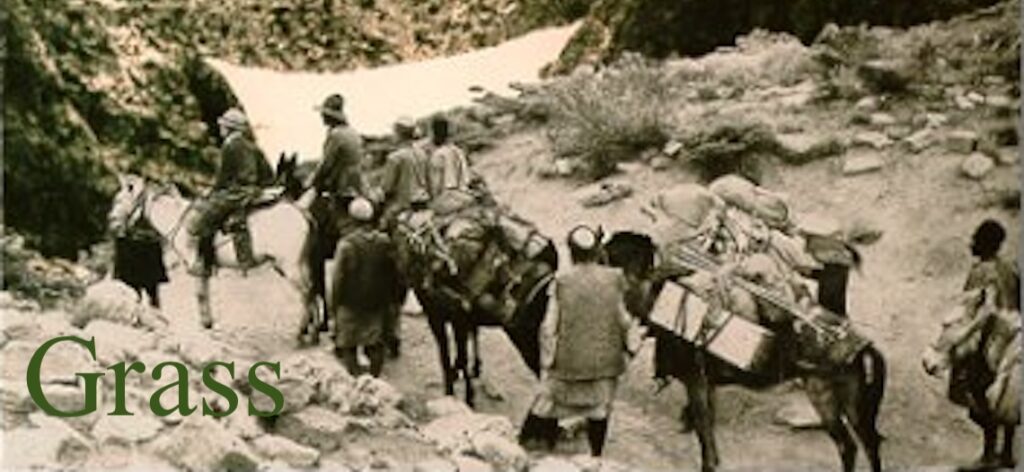
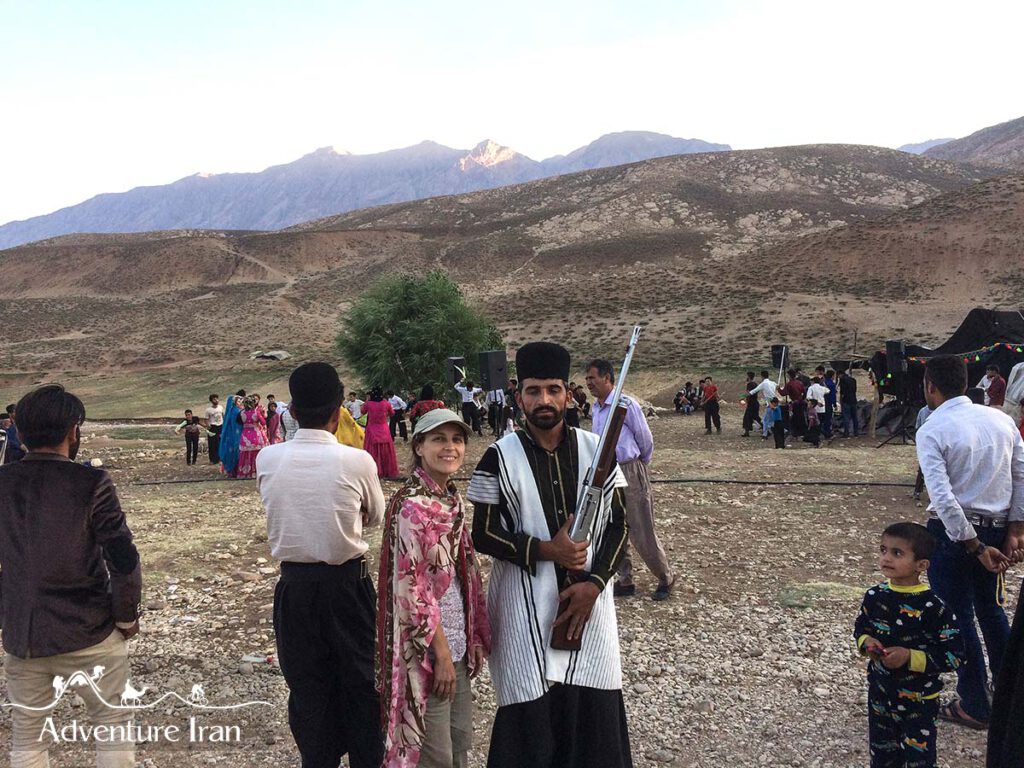
Iran Bakhtiari Tribe Events and Ceremonies
-
Bakhtiari Nomads Wedding
During the formal courtship, the groom’s mother presents a beautiful scarf to the bride as the symbol of the ring in other cultures. The bride’s family gives sweets to the groom’s family to show their agreement. The nomadic girls who have engaged weave carpets until marriage time and take it with them to the new house after marriage. On the wedding night and after dinner, the groom’s family and relatives escort the bride and her family to the new couple’s house while carrying the mirror and candlesticks. The bride usually rides on a horse. The musicians play Sorna and Dhol (drums), and the guests perform traditional dance and sing traditional songs. One of the famous songs is Ahay Goley.
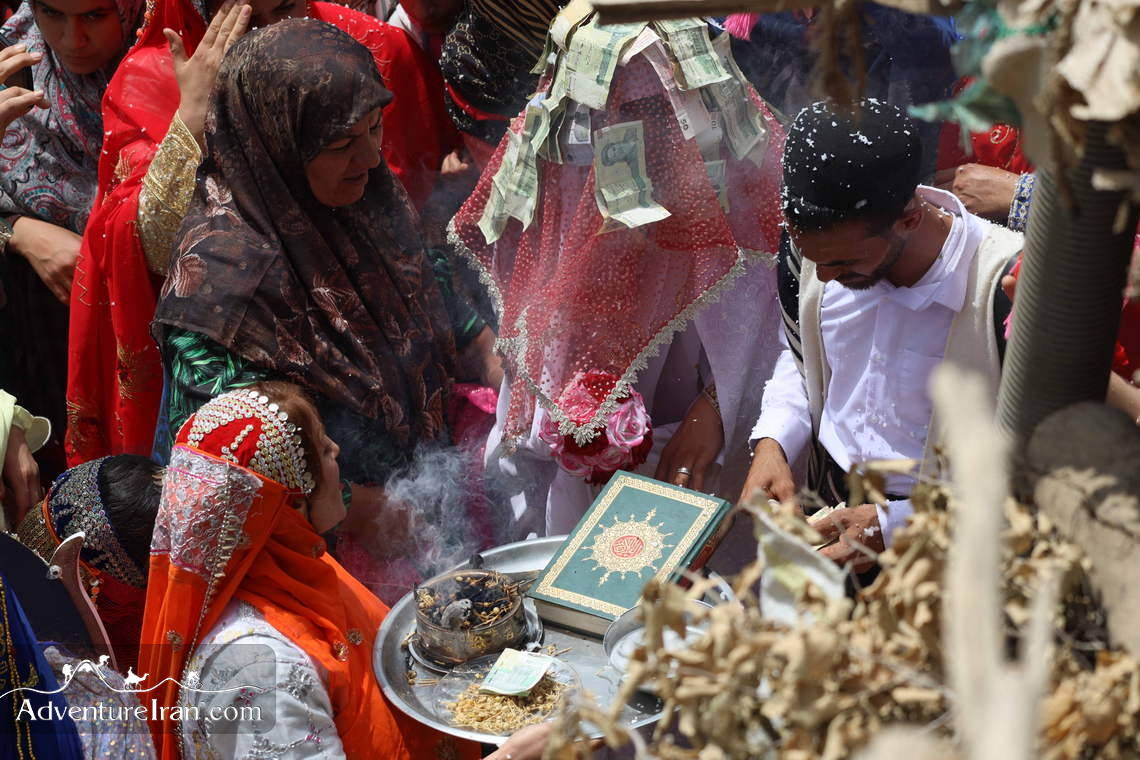
-
Nowruz among Iran Bakhtiari Nomads
Bakhtiari nomads celebrate Nowruz similar to other regions in Iran. About 10 days before Nowruz, they plant the greens (sabzeh). In the past, they picked up some grass or greens from the plains. They cook green foods such as sabzi polo (herb rice), and Ghorme sabzi (herb stew). Bakhtiari nomadic tribe, like many other tribes, used to believe that the Earth was placed on a cow’s horn which moved to the other horn at the time of New Year.
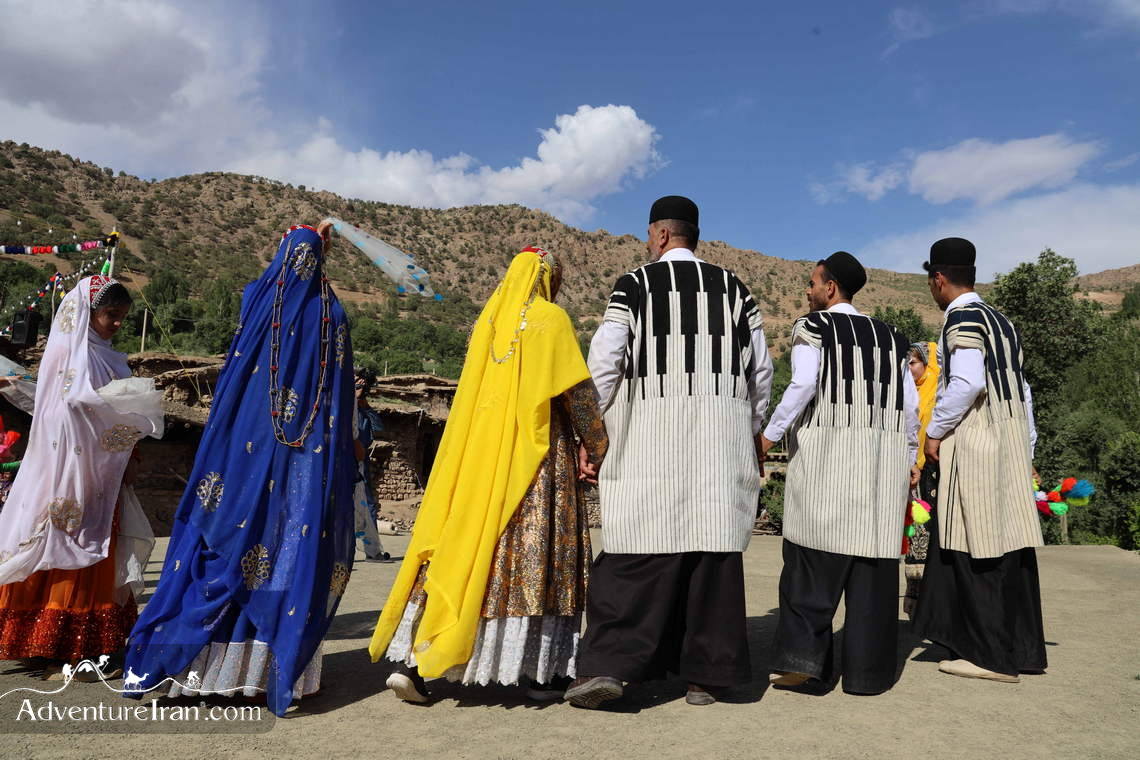
-
Bakhtiari Nomadic Dance
Bakhtiari dance is the epic symbol of unity and solidarity. Some kinds of dance are performed only by men, some by women, and some by both. Choob Bazi (wood sticks game) is performed by two men at first, while the others stand around and take turns participating in dance. Other dances performed by both men and women include the dances of Dopa, Sepa, Chahar Dastmli (four handkerchiefs), Jeyran, and sculpture dance.
In the Sepa (three-legged) dance, the dancers take three steps forward with their right foot and then bend the leg. Then, they bend the left leg and go back two steps. The dancers stand shoulder to shoulder and keep each other’s hands. The Dopa (two-legged) dance is also performed when the rhythm is fast. Since the Sepa and Dopa dances are very active, they are mostly performed by younger people. In Jeyran dance, men and women dance together.
Attending Adventure Iran nomad tours, immerse yourself in the nomadic Bakhtiari culture and ceremonies for some moments, and enjoy the nomads’ hospitality that is less known to many.
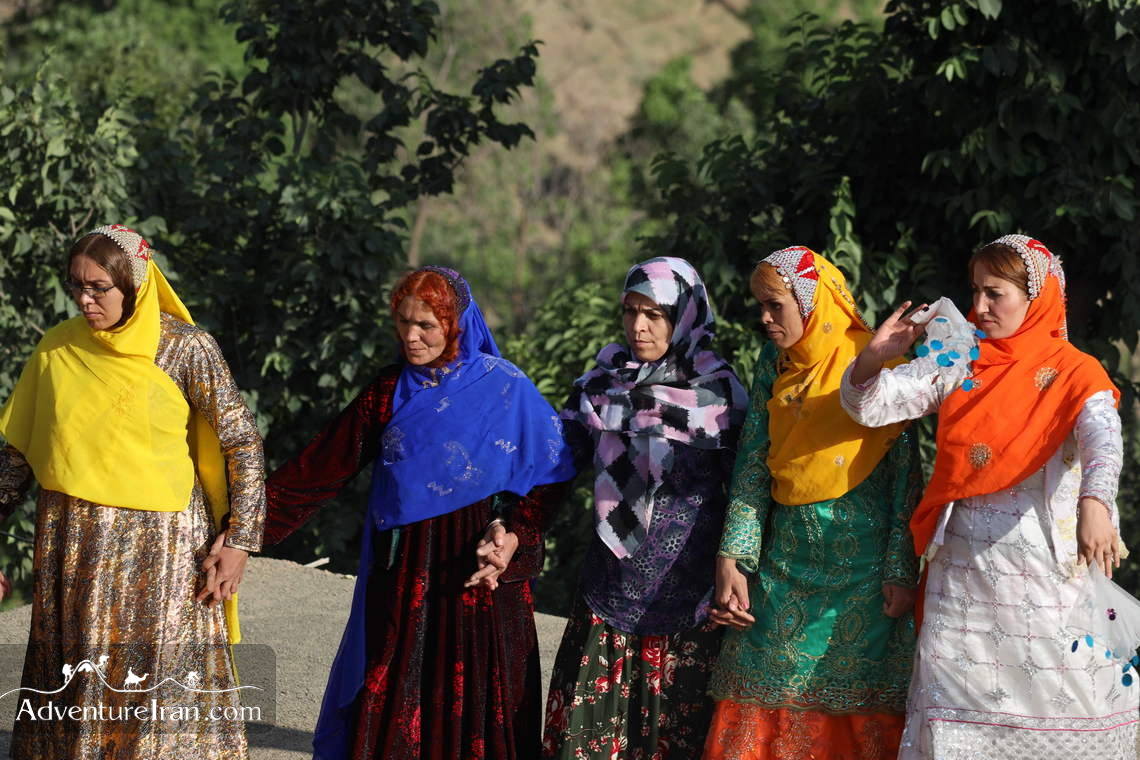
Mountains and Landscapes
Zagros mountain range is divided into different sub-ranges, each encompassing various peaks. Dena (4409 m) and Zardkuh (4221 m) are Zagros sub-ranges. The highest peak of the Zagros Mountains is Qash Mastan (4450 m) in the Dena sub-range.
Moreover, Zagros keeps one of the most ancient parts of Persia in its heart. A collection of Iranian ethnic groups such as the Qashqai nomadic tribe, Kurds, Turks, and Assyrian Christians reside here. Zagros is also home to the ancestors of many plants we know today. Many parts of it are covered with oak forests and wild pistachio trees. Zagros Mountain embraces a vast range of endemic (and also endangered) mammal species such as brown bears. It encompasses the amazing Dena Biosphere Reserve (UNESCO Site) in the Central part (covering an approximate area of 250,000 hectares), charming Arjan Biosphere Reserve and Parishan Wetland in the southern part, as well as over 40 peaks higher than 4,000 m along its length.
A complex of scenic sceneries of the waterfalls and lakes on the highlands, multiplicity of high peaks, astonishing ethnic diversity, as well as the unique environment of endangered species have made the Zagros mountain range an ideal location for all adventure seekers, photographers, zoologists, anthropologists, and all those who are interested in activities such as trekking, mountain climbing, mountain biking, skiing, and visiting nomads.
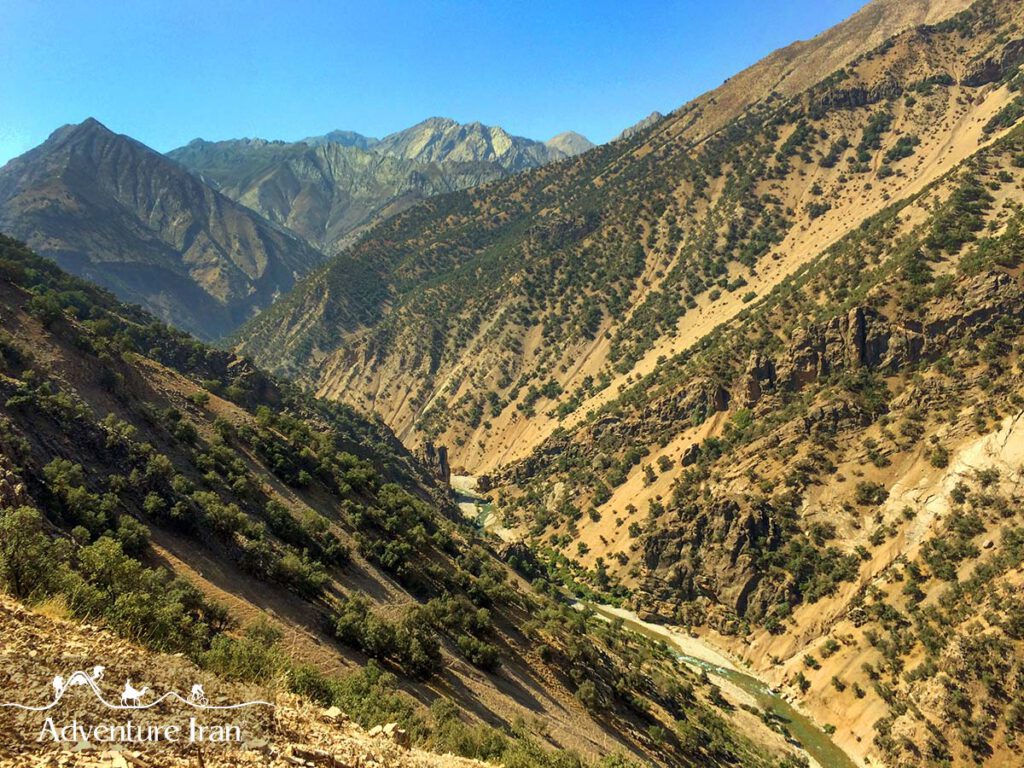
Books about Iran Bakhtiari Nomads
If you are interested in knowing more about Iran’s Bakhtiari tribe, the book introduced here can come in handy.
The book “Khans and Shahs: A History of the Bakhtiyari Tribe in Iran” written by Gene R. Garthwaite, a history professor at Dartmouth College, New Hampshire, presents a comprehensive picture of the Bakhtiari tribe from the 14th century to the present day.
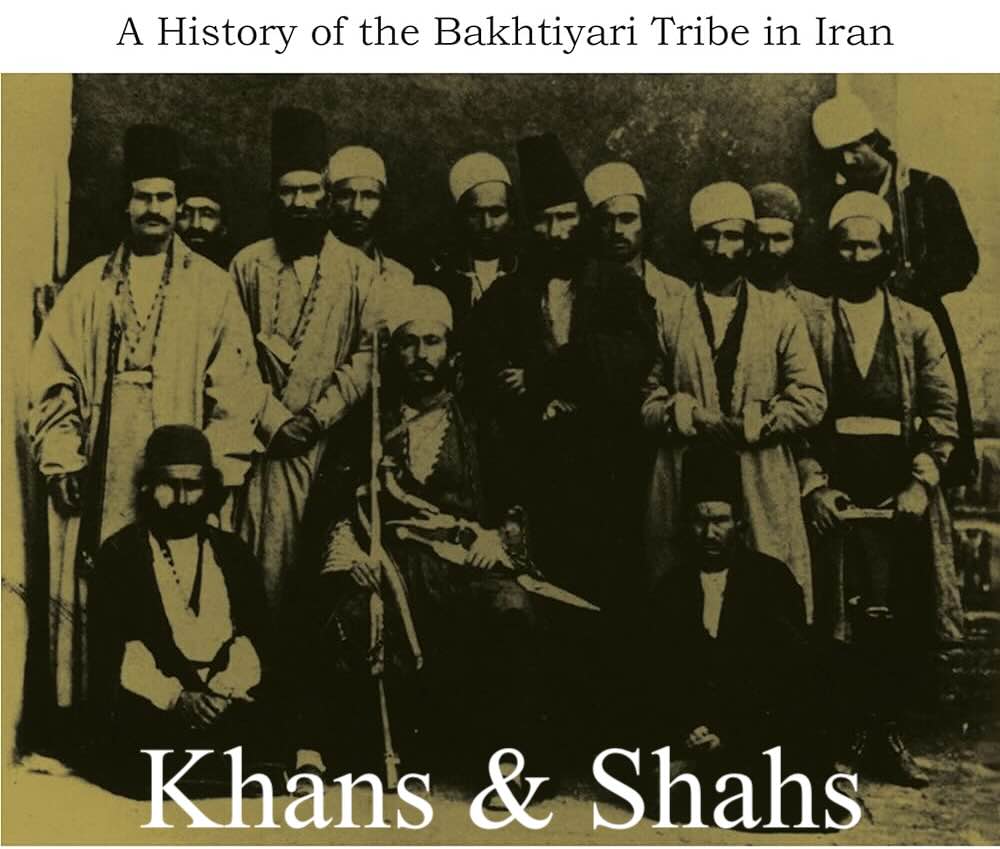

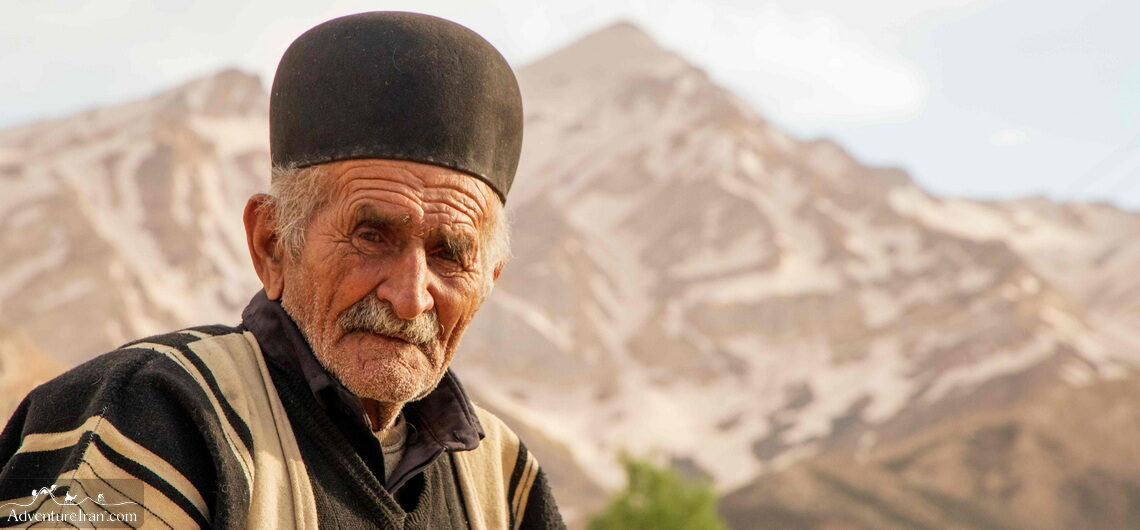
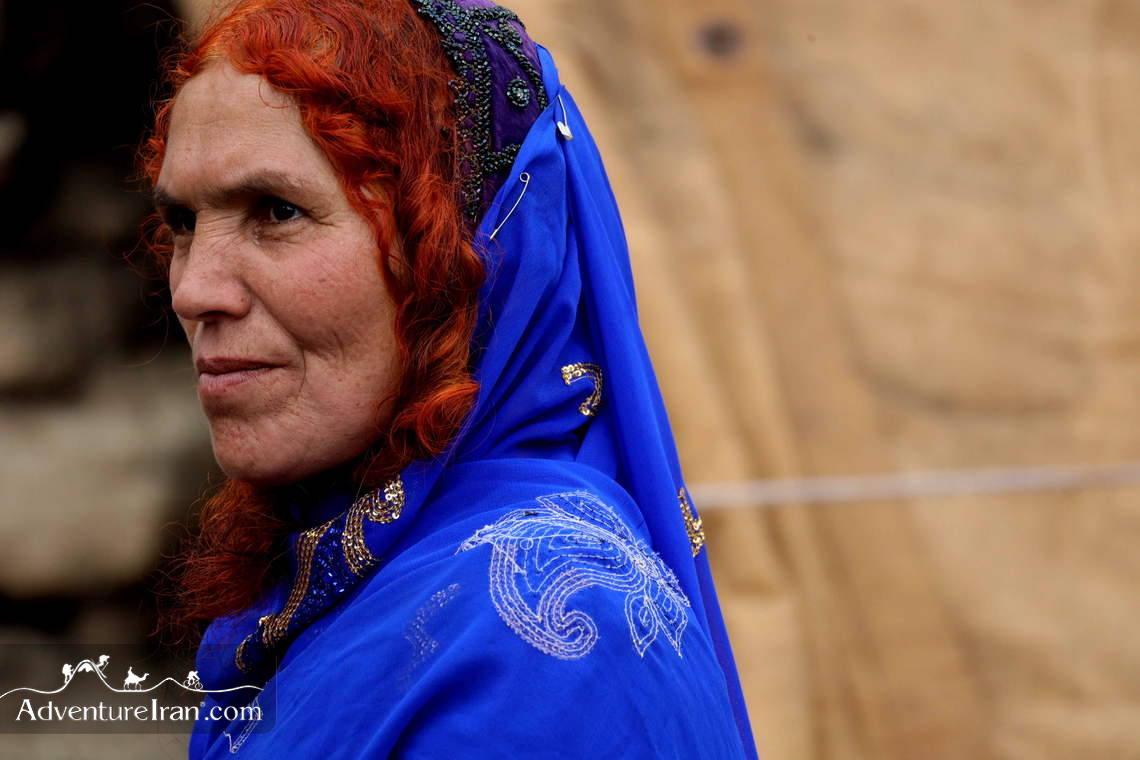
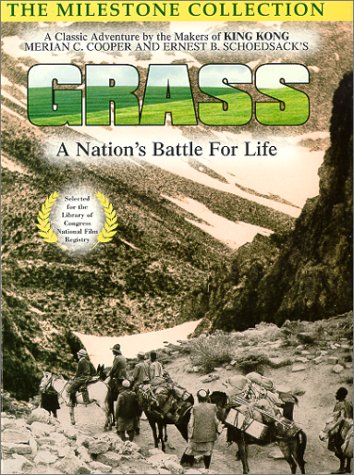

Comments